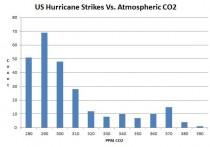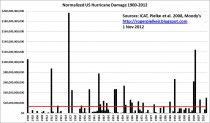Beating Election Depression Through Constructive Action: Three Urgent Arenas
By Larry Bell, Forbes (reprinted with author permission)
I switched channels after the Ohio results came in and intentionally watched a really dumb action movie in order to get tired enough to sleep. Still in a disconsolate state of shock the next morning, I was in no mood for post-mortem could’a-should’a-would’a mental replays, even lacking sufficient emotional capacity to muster up anger.
But this is a resilient country. We will survive. And there’s much we can all do to make it better...stronger. And who knows, maybe things won’t be as bad as I have imagined during the president’s second term. Having no more elections to face, maybe now he won’t be as bound to accede to dictates of his far left base. Maybe Democrats and Republicans can find enough common negotiating space to prevent budgetary sequestration from being triggered, and to avoid a disastrous economic plunge over the fiscal cliff.
These are only a couple of the overarching issues that will drive and shape future developments. Within those larger dynamics there are some smaller, yet very important congressional and judiciary arenas where motivated voters can still exert considerable influence. Let’s consider three of them.
U.N. Arms Trade and Law of the Sea Treaties:
Just hours after President Obama was re-elected, the U.S. backed a U.N. call to renew debate over a draft Arms Trade Treaty (ATT). Even many U.N. delegates and gun control activists believe this process was put on hold due to presidential campaign concerns. While ATT is represented as a means to regulate only government-to-government transfers and direct sales by manufacturers to governments, it is broadly perceived by skeptics as a strategy for those who oppose Second Amendment rights to ultimately achieve their goal of prohibiting private firearms ownership through vague, innocuous language without media attention.
Under current plans, the treaty will be submitted to nations early next year for virtually-assured signature and ratification upon receiving a two-thirds vote. And while U.S. treaty ratification will also require an unlikely two-thirds Senate approval...according to a paper published by legal scholar David Kopel and his colleagues in the Bringham Young University Journal of Public Law, there are many ways unratified treaties can work their ways into U.S. laws.
The authors conclude : “For example, some eminent international disarmament experts have taken the position that the president of the United States may announce that a treaty has entered into force, and thereby become the law of the United States even if the U.S. Senate has never voted to ratify the treaty. The United States Supreme Court has cited unratified treaties (and even an African treaty), and various contemporary foreign law sources, as guidance for interpreting United States constitutional provisions. Likewise, other scholars, writing in a U.N. publication, argue that United Nations gun control documents (notwithstanding the fact that the documents, on their face, have no binding legal effect) represent ‘norms’ of international law.”
On June 29th, 130 Republican House members sent a letter to President Obama and Secretary Clinton arguing that the proposed treaty infringes on the “fundamental, individual right to keep and bear arms”. The letter charges that “...the U.N.’s actions to date indicate that the ATT is likely to pose significant threats to our national security, foreign policy, and economic interests as well as our constitutional rights.” The lawmakers adamantly insist that the U.S. Government has no right to support a treaty that violates the Constitution and Bill of Rights.
Although Democrats maintain that the treaty poses no Second Amendment threat, former U.N. ambassador John Bolton, cautions gun owners to take this initiative seriously. He believes that the U.N. “...is trying to act as though this is really just a treaty about international arms trade between nation states, but there is no doubt that the real agenda here is domestic firearms control.”
There are also some Obama-backed U.N. treaties that defeated globalist-oriented lame-duck members of Congress with nothing to lose may successfully help to push through for ratification before leaving office. One is the Law of the Sea Treaty (LOST) which would subordinate U.S. naval and drilling operations beyond 200 miles of our coast to a newly established U.N. bureaucracy. If approved, it will grant a Kingston, Jamaica-based International Seabed Authority (ISA) the power to regulate deep-sea oil exploration, and seabed mining.
As part of the deal, as much as 7% of U.S. government revenue collected from oil and gas companies operating off our coast will be forked over to ISA for redistribution to poorer, landlocked countries. This apparently is in penance for America’s audacity in perpetuating prosperity yielded by our Industrial Revolution.
Like the U.N.’s Kyoto Protocol debacle that preceded it, this most recent LOST cause embodies the progressive ideal of subordinating the sovereignty of nation states to authoritarian dictates of a world body. The U.S. would have one vote out of 160 regarding where the money would go, and be obligated to hand over offshore drilling technology to any nation that wants it...for free.
And who are those lucky international recipients? They will most likely include such undemocratic, despotic and brutal governments as Belarus, Burma, China, Cuba, Sudan and Zimbabwe...all current voting members of LOST.
There are also some upcoming treaties with very admirable-sounding titles, but posing much less loveable U.N. regulatory intrusions into other matters of U.S. sovereignty. An example is a global Convention on the Rights of Persons with Disabilities (CRPD) which was signed by our U.N. Ambassador Susan Rice (now famous for false public statements about the Benghazi attack). We already have numerous organizations and statutes that address these needs without U.N. busybodies butting in. Another is a U.N. Treaty on the Rights of the Child, a broadside attack on parent’s rights to limit media programs they can watch, or determine which church they attend.
Environmental and Energy Regulations:
According to the annual “Regulator’s Budget” compiled last year by George Washington University and Washington University in St. Louis, the employment of federal government regulators has climbed 13% since Obama took office, while private sector jobs shrank by 5.6%. In fact, if the federal government’s regulatory operations were a business, their $54 billion budget would make them one of the 50 the largest in the country… bigger than McDonald’s, Ford, Disney and Boeing combined.
Now, with his re-election behind him, President Obama can plow “Forward”, using the EPA and other agencies to expand regulatory intervention into wide-ranging aspects of our lives and economy. Particularly hard hit will be those which are highly energy-dependent.
The American Council for Capital Formation estimates that the new EPA regulations already in place will result in 476,000 to 1,400,000 lost jobs by the end of 2014. Management Information Services, Inc. foresees that up to 2.5 million jobs will be sacrificed, annual household income could decrease by $1,200, and gasoline and residential electricity prices may increase 50% by 2030. The Heritage Foundation projects that the greenhouse gas regulations will cost nearly $7 trillion (2008 dollars) in economic output by 2029.
Former climate czar Carol Browner was very clear about what;s in store when she told several green groups not to worry, because “President Obama has a big green ‘to-do’ list for 2013 so they’ll get what they want."On the other hand, if you want to build a coal plant, you’ve got a big problem. EPA;s proposed coal ash rule could cost $79 to $110 billion over 20 years, destroying 183,900 to 316,000 jobs. This will have disastrous impacts in states like Pennsylvania, West Virginia, Ohio and Missouri. (Remember hearing about some of those states as likely Republican swing states?)
Now, premised upon climate alarm, which has even been disavowed by EPA’s own internal review of the matter, the agency is proposing the first source-specific emissions standards for new power plants. These restrictions are so strict that they will virtually eliminate coal as a fuel option for future electric power generation.
While EPA has punted on standards for existing power plants, as well as refineries, we can expect the agency to proceed under auspices of its Clean Air Act (CAA) to issue regulations, industry by industry, until virtually every aspect of the American economy is severely constrained by bureaucratic permitting requirements. These rules are projected to cost more than $300 to $400 billion a year, and will significantly raise the price of gas at the pump and energy in the home.
This ominous precedent can apply to small private entities as well, including churches, schools, restaurants, hospitals and farms. For example, under proposed federal permitting requirements, a farm whose aggregate emissions exceed CAA permitting thresholds would be required to pay a “cow tax” for each ton of greenhouse gas emitted on an annual basis. EPA itself estimates that this will require more than 37,000 farms and ranches to pay an average $23,000 every year, affecting over 90% of all U.S. livestock production.
EPA may also tighten farm dust standards as part its review of the National Ambient Air Quality Standards (NAAQS) for coarse particulate matter (PM10). This would have widespread implications for rural America where the only way to comply will be to reduce numbers of livestock, cut back on tilling of fields, or to shrink or even end businesses altogether.
There are a large number of other planned EPA air and water regulations either in force or in the works. EPA’s Boiler MACT (Maximum Achievable Control Technology) standards are so restrictive that not even many of the best-performing sources can meet them. Such companies will have no choice but to shut their doors and ship manufacturing jobs overseas. The rule has been projected to reduce U.S. GDP by as much as 1.2 billion dollars, and to destroy nearly 800,000 jobs.
EPA’s Cement MACT rule could cause 18 plants to shut down, eliminating up to 80,000 road, bridge and building construction workers due to substantially increased cement costs. As with Boiler MACT, EPA had postponed decisions on certain aspects of the rule until after the election.
Although President Obama previously admitted that the “regulatory burdens and regulatory uncertainty” of tightening an existing ozone standard would harm jobs and the economy, he still pointed to the fact that it will be reconsidered in 2013. EPA itself estimated that this would cost $90 billion a year. Other studies project that the rule could cost upwards of a trillion dollars and destroy 7.4 million jobs, and put 650 additional counties into a category of “non-attainment”. This is the equivalent of posting a “closed for business” sign on communities which will suffer from severe business and job losses resulting from large numbers of plant closures.
A proposed new guidance document for waters covered by the Clean Water Act, reinterprets recent Supreme Court decisions to allow EPA to expand federal control over virtually every body of water in the United States, no matter how small. EPA’s own analysis of the document estimated that up to 17% of current non-jurisdictional determinations would be considered jurisdictional using the new guidance. Such federal guidance will impose large additional regulatory responsibilities and costs for states and municipalities.
EPA also plans to expand a universe of federal storm-water regulations. Included are first-time standards for post-construction and retrofit requirements for storm-water systems. This can force cities to change existing buildings, storm-water sewers, and streets. It may even mandate the use of “green infrastructure” techniques (like “green roofs,” rain gardens, permeable pavement) to replace conventional storm-water management practices. All this will put enormous cost burdens on states, municipalities, and just about anyone who owns or wants to develop property.
EPA is working to curtail hydraulic fracturing (or “fracking") that is providing access to America’s huge oil and gas resources through a variety of mechanisms. One strategy applies guidance measures which restrict use of diesel fuels in the process, stripping states of the primacy granted to them through the Safe Drinking Water Act. This is premised upon a broadly criticized study purportedly linking fracking to water contamination. Other back-door regulatory mechanisms include the Toxic Substances Control Act, Resource Conservation and Recovery Act, the Clean Air Act, and potentially, applications of Effluent Limitations Guidelines for both shale gas extraction and coal-bed methane.
Fracking is not only under attack by EPA, but by more than a dozen other agencies as well. Included are the Department of Energy, the Bureau of Land Management (BLM), the Center for Disease Control, the Department of Agriculture, and even the Securities and Exchange Commission. The BLM, under Secretary Salazar’s control, will now commence finalizing new regulations.
These are but some of the new and proposed federal regulations that will significantly impact our future, and we can be certain that we will see many more. So what influence can we have? Well, in addition to whatever direct persuasion that can be exerted through our Congressional representatives, there’s also another avenue...the judiciary.
The Courts:
While it’s a difficult, costly and lengthy slog to do so, unwarranted federal regulations are successfully being overturned in court thanks to aggressive litigants and sensible judges. In a recent example, the U.S. Court of Appeals for the D.C. Circuit struck down the signature “Cross-State Air Pollution Rule” enacted by EPA a year ago that was supposed to reduce air pollution emitted in one state and carried to another, even by levels exceeding the originator state’s federal air quality standards. The court also found that EPA acted illegally in dictating measures to be used in compliance, rather than allowing states to develop their own plans according to statutory provisions.
Another August ruling by the Fifth Circuit Court of Appeals spared the state of Texas from “arbitrary and capricious” rejection of utility permitting processes that put EPA in the board rooms and boiler plants of industrial and utility companies. The finding determined that 120 unjustly targeted permit holders were wrongly mandated to ‘de-flex” under threat of federal and civil sanctions with no environmental benefit. Although not a single pound of emissions reductions resulted, the companies had been forced to spend millions of dollars to satisfy what amounted to a bureaucratic paper exercise.
In another ruling on July 11, Judge Reggie B. Walton of the U.S. District Court for the District of Columbia rejected EPA’s attempts to regulate Appalachian surface coal mining based upon “final guidance” which had been falsely characterized as “non-binding”. The court agreed with plaintiffs that EPA had overstepped the authority given to it by Congress under the Surface Mining Control and Reclamation Act and the Clean Water Act. The opinion also validated positions of state government parties and the regulated community that EPA cannot disrupt the regulatory balance created by Congress for mining governance in which the EPA has no direct role. This provides a precedent for other legal challenges to EPA’s use of guidance documents for unauthorized regulatory purposes.
In a similar case, the D.C. Court of Appeals ruled in 2011 to reject EPA’s reliance on guidance documents that were never adopted as administrative rules under the Clean Air Act which violated rights of states to propose alternatives. And in still another case, the Natural Resources Defense Council successfully challenged that the EPA violated the Administrative Procedures Act’s notice and comments requirements by unilaterally issuing “guidance” as a policy statement or interpretive rule on a case-by-case basis without notice and comment, thus avoiding the statutory rulemaking process.
Now, the D.C. Circuit Court of Appeals, the vitally important leading court for legal challenges to new regulation, is itself under attack by liberal media led by the Washington Post and New York Times. Although many of the court’s opinions have been joined by Democratic and Republican appointees, particular outrage centers on a July finding that rejected a Security and Exchange Commission’s so-called “proxy access” rule which would have increased union power over corporate boards.
A key target of liberal ire appears to be Judge Brett Kavanaugh, who, at the age of 47, is young enough for consideration as a future Supreme Court nomination. The left knows that repeated media portrayals of conservative judges and their opinions as radical or out of the mainstream is an effective tactic.
The scariest consequences of this past election revolve around influences upon future Supreme Court decisions...especially concerning judicial interpretations of constitutional protections recognized by the Second Amendment. Imagine more justices in the philosophical mold of the president’s most recent addition, Elana Kagan, a gun-unfriendly attorney who participated in writing the 1998 Clinton White House executive order banning imports of 58 types of “semiautomatic assault rifles”. Then there’s also Sonia Sotomayor, an Obama nominee who joined Justice Stephen Breyer’s dissenting opinion in the narrow 5-4 McDonald v. City of Chicago decision which clarified that Second Amendment rights apply to states.
An Obama reelection presents an extreme risk of replacing at least one of five Supreme Court justices who have vindicated Second Amendment protections in the precarious Heller and McDonald decisions. If this were to happen, our right to bear arms might become a lost historical memory for future oppressed generations to read about.
With four more years ahead, and the Executive Branch, the Senate and the mainstream media stacked against conservative values, we have no choice but to prepare for a regulatory tsunami and just hold back the floods where we can. This isn’t going to be easy, but then, nobody ever promised us a White House Rose Garden. We must now double-down on our efforts to win it back before only restrictive thorns remain, and before our economic future turns to brambles.
---------------
Green agenda threatens economic future
By Paul Driessen
When American voters re-elected President Obama, they also returned his Environmental Protection Agency (EPA), Interior and Energy departments and wide-ranging agenda for “fundamentally transforming” our nation.
This will mean cementing Obamacare, Dodd-Frank, higher taxes and rampant spending. It also will bring more disputes over energy and environmental regulations, the vanguard of Mr. Obama’s determined campaign to eliminate hydrocarbons that power our economy and to embrace more “green” energy. The conflict will be fought primarily on six battlegrounds:
Carbon taxes: Hurricane Sandy presented a fresh pretext for regulating and taxing hydrocarbons. No respectable climatologist or meteorologist believes atmospheric carbon dioxide conjured up the destructive storm, but climate alarmism always has been about political science, not real science.
Democratic Rep. Jim McDermott’s Managed Carbon Price Act imputes a cost for CO2 emissions and compels energy producers and users to buy carbon permits. The president is considering a direct carbon tax that he says will raise billions of dollars annually and reduce deficits. Both ought to be dead on arrival in the House. Another pointless round of United Nations-sponsored climate treaty discussions will take place soon in Doha, Qatar.
The real threat is EPA regulations limiting CO2 from power plants and other sources by executive fiat.
With China, India and other developing countries massively increasing their “greenhouse gas” emissions, none of these proposals would reduce atmospheric CO2 levels. They would, however, put government in charge of our entire economy, sharply increase energy prices for every business and household, kill millions of jobs, ensure that new tax revenues never materialize, and hurt poor families most.
War on hydrocarbons: America has abundant hydrocarbons, onshore and offshore, including centuries’ worth of natural gas for heating, petrochemicals, electricity generation and vehicles. With little to hold their pre-election anti-energy instincts in check, the White House, EPA and Interior may still oppose the Keystone XL pipeline, further delay onshore and offshore drilling, and unleash a blitzkrieg of new rules on hydraulic fracturing and coal-fired power plants.
That would stifle job creation, revenue generation and economic growth while leaving the nation dependent on despotic regimes and costly renewable-energy schemes.
Renewable-energy preferences: Antipathy toward oil, gas and coal is matched by the pincer move of mandates, fuel standards and subsidies for wind, solar and biofuel power. The first pitched battle will decide whether the production tax credit for wind-based electricity will be extended again.
Other battles will be fought over corn for food versus cars; growing opposition to bird-killing industrial wind facilities and habitat-smothering solar projects; the impact of pricey renewable energy on families, hospitals, factories, businesses and jobs; and corrupt corporate cronyism among politicians and the heavily subsidized campaign contributors they keep in business.
Unequal treatment under law: Mandates and subsidies are not enough to keep industrial wind facilities solvent. They also require exemptions from laws governing endangered species, migratory birds, environmental reviews and other issues.
Even the most speculative environmental impacts can scuttle oil, gas, coal and uranium proposals — and oil companies are routinely assessed major fines if ducks die after landing in uncovered waste pits. However, wind operators incur no penalties for killing thousands of eagles, hawks, whooping cranes, bats and other rare and vital flying creatures every year. Citizens, companies, courts and legislators are expressing growing intolerance for separate regulatory regimes and unequal treatment under law.
Agenda science: Sound risk assessment and honest cost-benefit analyses have been replaced by conjecture, exaggeration and agenda-driven politicized science at too many federal agencies. EPA is the worst offender, but the Interior, Energy and even Defense departments also are culprits.
Risks from climate change, mercury, soot and industrial chemicals are inflated routinely, as are the purported benefits of exorbitantly expensive regulations. Meanwhile, the impact of rules on energy prices, business profits and competitiveness, jobs and, thus, overall human health and welfare are ignored.
With total federal regulatory compliance costs now estimated at $1.75 trillion and 8.8 billion hours annually, this issue could become a legislative and regulatory Battle of Kursk.
Subsidized pressure and propaganda: Billions of dollars in taxpayer subsidies continue to flow each year to bureaucratic zealots, environmentalist pressure groups, universities and other organizations. These dollars fund junk science, strained justifications for indefensible rules, more pressure to regulate for increasingly diminished returns, and outright propaganda.
Federal and state legislators need to hold investigative hearings, demand accountability, cut bloated agency budgets that enable such expenditures, and question why tax-exempt activist groups should receive taxpayer money funneled through government agencies.
America can continue paying billions in subsidies annually to prop up “green” technologies and agenda-driven science, or we can generate tens of billions a year in royalties and taxes, create millions of jobs and rejuvenate our economy through hydrocarbons, nuclear power and common-sense regulations.
Will President Obama, Democrats and executive branch agencies be receptive to bipartisan approaches - to institutionalizing all-of-the-above energy decisions that make scientific, economic, environmental and technological sense? Or will they be even more entrenched, knowing the White House can act via executive decree if Congress does nothing?
The answer will determine whether the United States becomes an economic powerhouse once again or an enormous Greece. Blessed with more oil, gas and coal than almost any other nation on earth, we must not refuse to develop these resources.
Paul Driessen is senior policy adviser for the Committee for a Constructive Tomorrow and author of “Eco-Imperialism: Green Power, Black Death” (Merril Press, 2012).
Read more: DRIESSEN: The coming environmental battlegrounds - Washington Times
---------------------
Just prior to the election Sen. James Inhofe (R-OK) did an interview with WND concerning the surprise regulations that Pres. Obama had in store for after the election. These regulations will most likely go into effect in the very near future now that Obama won re-election.
Inhofe told WND’s Greg Corombos that Obama is trying to destroy everything that has made America great. You said that Obama has a war on fossil fuels and that he seems to be doing everything possible to undermine and destroy America’s oil, natural gas and coal industries. He said that America could be totally independent from Middle East and other foreign sources of fossil fuels but Obama has blocked all efforts to do so.
In the defense industry Obama seems to be weakening US strength. In his first budget he destroyed the F-22, our only fifth generation fighter. Obama also destroyed our lift capacity by killing the C 17 along with our future combat system. The US had a plan to prevent missiles from Iran reaching the US but Obama killed this as well.
Inhofe stated that there are a number of regulations that would have a negative impact on America that Obama was waiting until after the election to put in place. Many of these regulations were measures that Congress would not pass, so Obama is planning on bypassing Congress and implementing them by making them new regulations. Some of those regulations mentioned are:
Tier Three Gas Regulations: Raising the price of gas at the pumps by 9 cents.
Water Guidance Regulation: Federal government controls any navigable waterway, but the new regulation would remove the word ‘navigable’ and put any standing water under federal government control. This means any standing rain water, irrigation ponds and runoff on farmlands would come under government control.
Farm Dust Regulation: Would regulate the amount of dust allowed from a farm field during plowing, tilling or even between growing seasons.
Spill Prevention and Control Counter Measure
Boiler MACT: Controls emissions from manufacturing boilers. New regulations will establish standards that are below what many companies can achieve and financially remain in business. This could potentially cost up to 800,000 jobs.
Greenhouse Gas Regulations: Annual cost of $400 to $500 billion.
Hydraulic Fracturing: Would place all hydraulic fracturing under federal control.
At the end of the interview, Sen. Inhofe mentioned the comment Obama made to Russian President Medvedev that was caught on microphone. Obama told him to tell Putin that he will have a lot more flexibility once he is re-elected to do the things he wants to do.
Remember, this was recorded just prior to the election, but listen to what Inhofe says about Obama purposely violating laws and how he will work to destroy farming, fossil fuels and industry in America.
Read more.

See more
By Art Horn

In the aftermath of Hurricane Sandy people with no meteorological training at all are climbing high atop media soap boxes, proclaiming that Hurricane Sandy is part of a “new normal” of extreme weather. Robert Puentes, a senior fellow with the Brookings Institution’s Metropolitan Policy Program said “Since we keep seeing large scale storms (the derecho this summer, Irene, Isabel) it may be wise for transit and infrastructure planners and officials to think of these as part of a new normal,” This claim is based on the often repeated warning that the increase of atmospheric carbon dioxide is causing the weather to become different than it was in the past, therefore creating a “new normal”. In other words, in the past the weather was “normal”, now because of the way we make energy, it is different and it’s our fault and we better do something about it, i.e. control the weather.
The Governor of New York and the Mayor of New York city have no training in meteorology or hurricanes but made statements implying that Sandy was the result of climate change. Governor Cuomo said “These are extreme weather patterns. The frequency has been increasing”. He has not done his homework with respect to hurricanes. Research by Dr. Ryan Maue shows that global hurricane activity has not increased since 1978 and has declined since the early 1990s. Meteorologist Joe D’Aleo quoted Dr. William Gray, the famous hurricane forecaster from Colorado State University, who predicted the current period of increased North Atlantic Hurricanes back in the 1980s. Dr. Gray said the increase will be due to changes in the ocean warming and cooling cycle know as the AMO. Hurricanes are not new to New Jersey or New England. They have been wreaking havoc on these regions since colonial times and before.

Enlarged. Last 4-decades of Global and Northern Hemisphere Accumulated Cyclone Energy: 24 month running sums. Note that the year indicated represents the value of ACE through the previous 24-months for the Northern Hemisphere (bottom line/gray boxes) and the entire global (top line/blue boxes). The area in between represents the Southern Hemisphere total ACE.
In the media business, implying that a big storm like Sandy is part of a “new normal” is an opportunity to create doubt and uncertainty. Planting doubt and uncertainty in the minds of the audience increases fear and fear is what sells news. The idea that there is a “new normal” is scare...details at eleven.
In order to say we are experiencing a “new normal” one must first understand what “normal” really is. The only way to do that is to understand both the history of hurricanes in the North Atlantic Ocean and their behavior in relation to atmospheric wind currents that dictate their destiny. The reason hurricane Sandy struck where it did was not due to a new normal. The storm struck because it was directed there by a wind current unrelated to the hurricane. That wind current is called a negatively tilted trough.
In many respects hurricane Sandy was no different than any of the thousands of hurricanes that have threatened the United States east coast in centuries past. In any given hurricane season, from June through November, there are hurricanes that pass harmlessly off the US east coast with hardly a mention. In fact most people have no idea the storm is there. The numbers of storms varies from year to year but in almost every season there is at least one or two that pass close but harmlessly offshore. In some years a negatively tilted wind current in the atmosphere develops that changes all of that.
When you drive down a road and there is a detour, you must change the road you were on. In that case you have no choice but to go in a different direction. That’s just what happened to hurricane Sandy, it ran into an atmospheric detour. That detour was a powerful negatively tilted trough or jetstream wind current that swept down from western Canada into the southern United States. This negatively tilted jetstream changed the road Sandy was on. Sandy was trying to cruise out to sea but this jetstream grabbed the storm and drove it right into the Northeast. In the vast majority of cases over many decades neither of these two weather systems collide at the same time along the US east coast, this time they did. It is not the first time.
During the course of any year it is not unusual for these negatively tilted jetstream troughs to develop along the US east coast, in fact they are quite common. What is uncommon is that there’s a hurricane barreling along on a separate road that intersects with the trough. As they say timing is everything. In the hurricane season of 2010 there were twelve hurricanes, twice the long term average of six, but none hit the US because the wind currents steered them away. This is what happens in most years. In the late 1930s a negatively tilted jetstream and a hurricane, much more powerful than Sandy, came together. The Great New England Hurricane of September 21st 1938 was a category 3 storm that devastated much of New England with winds estimated at 120 miles per hour with gusts as high as 160! Interestingly, this largest storm to affect New England in the last 400 years, occurred with carbon dioxide levels at 309 parts per million (ppm), far less than today’s 392 ppm. Excuse me! Are you saying that a storm much larger and more destructive than hurricane Sandy struck when carbon dioxide was much lower? Yes.
Along the US eastern seaboard there have been many hurricanes in the past that have been captured by the winds and slammed into the coast. On September the 3rd 1821 a category 3 hurricane struck dead center on New York City. The hurricane’s winds drove the water into a 13 foot surge that was pushed all the way up to canal street. The Battery area sustained massive flooding and destruction. Ships were driven into the city and the Hudson and East rivers likely joined. Amazingly, all this surge and destruction took place at low tide. Hurricane Sandy produced a storm surge of 13.9 feet but at high tide which was at 8:53 pm and with a full moon. (Those two factors made a difference of 6 feet). Significantly, in 1821 sea level in New York was at least one foot lower than it is today. If the hurricane of 1821 struck New York today the storm surge flooding would be worse than from Sandy, possibly much worse since sea level is at least a foot higher today (add 7 feet to 13.9). Oh, and by the way, in 1821 atmospheric carbon dioxide was 280 ppm., that’s 110 ppm less than today, how inconvenient.
Hurricane Sandy is a terrible tragedy for millions of people. That fact is that today, in our modern world, we enjoy the many benefits of electricity and all the other conveniences of technology. But all these amazing benefits also make us more vulnerable to the wrath of nature. Twenty five years ago, long before there was a lot of talk about global warming, Dr. William Gray predicted that a new era of destructive hurricanes was coming. Unfortunately his prediction was correct. The “new normal” is the old normal, it just comes and goes in cycles.
- See more.
This cover today is making the rounds in the alarmosphere, where a single storm, a single data point in the hundreds of hurricanes that have struck the USA during its history, is now apparently “proof” of global warming causing bad weather. It is just another silly example of Tabloid Climatology™.

Hurricane expert Dr. Roger Pielke Jr. says:
The only accurate part of this Bloomberg BusinessWeek cover is “stupid”
There, I fixed it for you.

The US Has Had 285 Hurricane Strikes Since 1850: “The U.S. has always been vulnerable to hurricanes. 86% of U.S. hurricane strikes occurred with CO2 below Hansen’s safe level of 350 PPM”
If there’s anything in this data at all, it looks like CO2 is preventing more US landfalling hurricanes.

Data from: www.aoml.noaa.gov/hrd/hurdat/ushurrlist18512009.txt
Source of graph, Steve Goddard.
In case you wish to tell Bloomberg about this fix:
Bloomberg Businessweek Editor
Patti Straus
+1 212 617 3279
UPDATE: from Dr. Roger Pielke Jr.
Normalized US Hurricane Damage 1900-2012, Including Sandy

The graph above shows normalized US hurricane damage, based on data from ICAT, which applies an extension to the methodology of Pielke et al. 2008. The 2012 estimate for Sandy comes from Moody’s, and is an estimate. The red line represents a linear best fit to the data, it is flat.
-------------
Send This Video to Everyone You Know; Obama taking donations from Osama Bin Laden, asks for more
Steve Goddard, Real Science
“Under my plan of a cap and trade system, electricity rates would necessarily skyrocket.”
“Coal-powered plants, you know, natural gas, you name it, whatever the plants were, whatever the industry was, they would have to retrofit their operations. That will cost money. They will pass that cost on to consumers.”
Barack Obama
-----------------
Obama Taking Money From Osama - Wants More
Posted on October 30, 2012
WASHINGTON: Using a Pakistani Internet Protocol and proxy server, a disposable credit card and a fake address, “Osama bin Laden” has successfully donated twice to Barack Obama’s presidential re-election campaign.
The “Bin Laden” donations, actually made by WND staff, included a listed occupation of “deceased terror chief” and a stated employer of “al-Qaida.”
“Bin Laden” is currently set up on the official campaign website to contribute more to Obama’s campaign. The name is also registered as a volunteer.
Since the “foreign” contribution was sent, “Bin Laden’s” email address has received several solicitations from Obama’s campaign asking for more donations.
Obama accepts ‘Osama bin Laden’ donations


